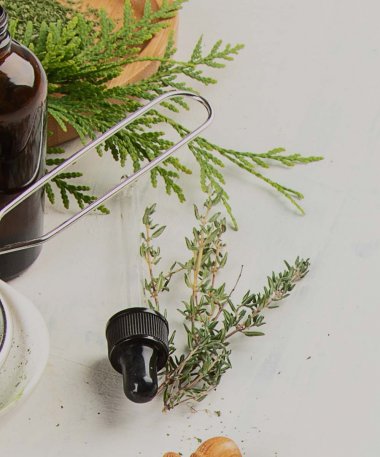With more and more people looking to eat better and to get the most bang for their nutrition buck, functional foods are gaining popularity. But, wait! Isn’t all food functional? “Some more than others,” says Jen Casey, RNP, Nature’s Fare Markets’ in-house Nutritionist for our White Rock and Langley locations. We wanted to learn more…
“Whole foods are already functional, as they provide vitamins, minerals, carbohydrates, fats, and proteins to nourish and repair our cells, and the energy we need to thrive,” says Jen. “Functional foods provide extra benefits, beyond basic nutritional needs, to improve and enhance health—like boosting immunity, reducing inflammation, or balancing blood sugar. More and more people are interested in holistic health and using food as medicine to treat and prevent some disorders, symptoms, and conditions. They are buying more local and organically grown whole foods, and making better dietary choices.”
Because of this interest, an increasing number of companies are adding beneficial ingredients to their products. That’s why we now have two categories of functional foods:
Conventional: Whole foods and beverages that are naturally rich in nutrients, minerals, antioxidants, or healthy fats
Modified: Foods and beverages—often processed—that have been enhanced with additional ingredients like vitamins and minerals, fibre, or probiotics.
“Enhanced beverages are a great example,” says Jen. “Like performance-enhancing drinks with electrolytes and vitamins; and smoothies with a wellness booster shot of turmeric, lemon, ginger, collagen, or gut-healing probiotics.”
Jen’s Favourite Functional Foods
Probiotics
Live bacterial cultures to improve the absorption of nutrients and strengthen the immune system
found in: kefir, sauerkraut, kombucha, and kimchi
added to: beverages and dairy-free yogurt for “improved gut health”
Omega-3 fatty acids
Healthy fat we must obtain from food, as we cannot synthesize it ourselves
found in: fatty fish, fish oils, flax, hemp hearts, and walnuts
added to: baby food, eggs, milk, protein powders, bread, pastas, and orange juice to help lower the risk of cardiovascular disease, improve brain health and development, and reduce inflammation
Collagen
Protein to enhance joint integrity, and skin, hair, and nail health
found in: fish and meat bones
added to: soups, protein bars, and powders for speedy athletic recovery
Manuka honey
Naturally antibacterial and immune boosting
added to: wellness products like cough lozenges, allergy relief products, cereals, elixirs, and skin care
Matcha
Concentrated green tea packed with antioxidants and cancer-fighting properties; speeds metabolism, aids in weight loss, balances blood sugar, and boosts energy
added to: baked goods, smoothies, and lattes
Super seeds
Plant-based protein and healthy omega-3s for brain health and to fight inflammation
includes: flax, hemp, quinoa, pumpkin, sunflower, chia, and sesame seeds
added to: cereals, granola bars, breads, and baked goods
Fermented/sprouted whole grains, beans, and seeds
Process breaks down enzymes making them easier to digest and absorb in our gut
added to: protein powders, protein bars, cereals, and grain-based products to improve gut health
tip: Sprout your own by soaking in water for at least a day. Rinse well, drain, then keep moist in a jar with screen/light mesh for a lid up to five days.
MCT Oil
A blend of coconut and palm oils providing quick energy
added to: protein powders, nut butters, coffee creamers, and protein bars
Turmeric (curcumin)
Anti-inflammatory and antioxidant properties; at home, add to oatmeal, golden milk lattes, immune-boosting wellness shots, and soups
added to: prepared soups, drink mixes, curries, bottled salad dressings, and healing elixirs
tip: Use in combination with black pepper and a healthy fat, like coconut oil, to increase absorption.
Put More Function in Your Food
Jen suggests we consider each and every meal, looking for ways to add nutritional benefits through colour, texture, and flavour.
Nuts & Seeds. Top a simple salad for brain-boosting omega-3s, healthy fibre, and satisfying crunch. Add to smoothies, salads, bliss balls, baked goods, yogurt, and oatmeal. Top fruit with hemp seeds or dunk in nut or seed butter for added protein and omega-3s.
Grains. Cook grains in protein-rich bone broth or veggie stock, or coconut milk to balance blood sugar.
Herbs & spices. Add blood-sugar levelling cinnamon to cereal or toast. Infuse antibacterial and anti-inflammatory ginger into your tea. Top roasted potatoes with gut-soothing rosemary, brain-boosting sage, or antioxidant-spiked cayenne.
Beans. Add fibre- and protein-rich chickpeas, beans, or lentils to stir-fries and salads.
Matcha. Switch your afternoon coffee for a cup of energizing, antioxidant-rich green tea.
Collagen. Add to smoothies or coffee, or use in a soup base.
Turmeric. Sprinkle this anti-inflammatory gem into oatmeal, golden milk lattes, wellness shots, and soups.
Garlic. Add this immune-boosting, heart-healthy wonder to almost everything!
This article was published in The Good Life magazine.



